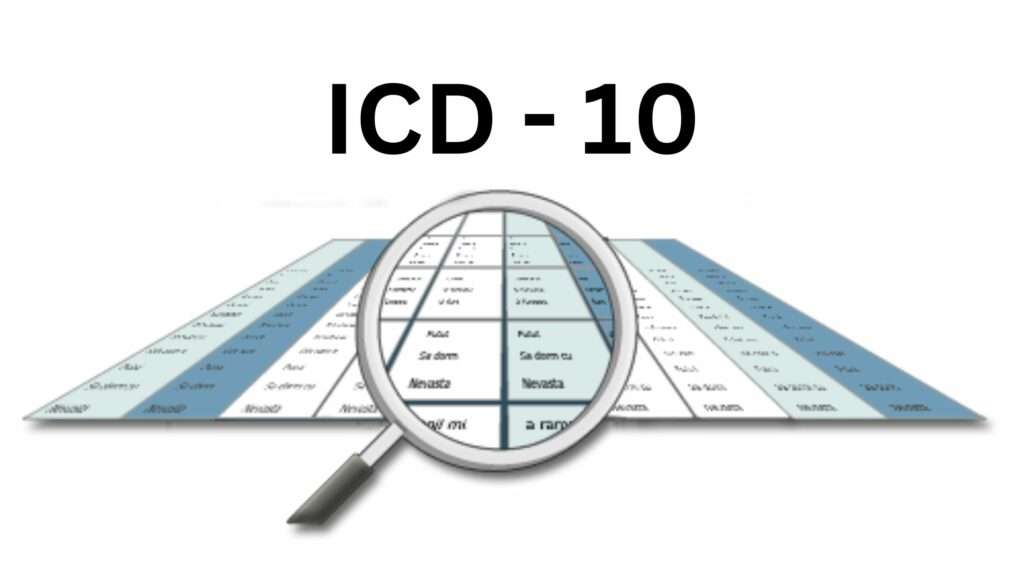In the ever-evolving world of healthcare, accurate and standardized coding plays a pivotal role in facilitating communication, reimbursement, and data analysis. One such coding system, the ICD-10 (International Classification of Diseases, 10th Revision), is widely used worldwide to categorize and document medical conditions and procedures. Understanding ICD-10 codes is essential for medical professionals, coders, and administrators to ensure effective patient care and proper billing. This guest post explores the significance of ICD-10 codes, their relationship with Hierarchical Condition Categories (HCCs), and the methods to look them up.
The Importance of ICD-10 Codes

ICD-10 codes are alphanumeric designations assigned to medical diagnoses, symptoms, and inpatient procedures. Their significance is vast, with several key aspects highlighted below:
- Improved Medical Communication: ICD-10 codes provide a standardized language that enables seamless communication between healthcare providers, insurers, researchers, and public health agencies. This ensures consistency in medical documentation and enhances patient care coordination.
- Precise Reimbursement: Accurate coding is crucial for healthcare facilities to receive appropriate reimbursement from insurance companies and government healthcare programs. ICD-10 codes form the basis for claims submission, making it essential for coders to assign the most specific and appropriate code for each patient encounter.
- Data Analysis and Research: The ICD-10 coding system aids in generating valuable health data for epidemiological studies, health trends analysis, and public health initiatives. Researchers can use aggregated data to identify patterns, risk factors, and potential areas for improvement in healthcare services.
Hierarchical Condition Categories (HCCs) in Coding
Hierarchical Condition Categories (HCCs) are a risk adjustment model used by various health insurance programs, such as Medicare Advantage, to estimate patients’ healthcare costs and predict health outcomes accurately. HCCs use ICD-10 codes to identify and categorize patients’ medical conditions into groups based on severity and complexity. The main features of HCC coding are:
- a) Predictive Modeling: HCC coding helps insurers predict future healthcare costs by considering a patient’s medical conditions and demographic factors. Patients with more severe and chronic conditions tend to have higher HCC scores, reflecting their greater healthcare needs.
- Impact on Reimbursement: Medicare Advantage and other risk-based payment systems use HCC scores to adjust payments to healthcare providers. A patient with higher HCC scores represents higher expected healthcare costs, leading to increased reimbursement for the provider caring for that patient.
- Patient-Centered Care: HCC coding encourages healthcare providers to focus on comprehensive and proactive care for patients with chronic and complex conditions. This approach aims to improve patient outcomes and reduce the overall cost of care.
Understanding ICD-10 Codes
ICD-10 codes are alphanumeric and structured to provide detailed information about a patient’s medical condition. The coding system consists of three to seven characters, with each character carrying specific significance:
- Category: The first three characters represent the broad category to which the diagnosis belongs. For example, “I10” represents essential (primary) hypertension.
- Etiology, Anatomic Site, Severity, or Other Details: The fourth through sixth characters provide additional details, such as the cause of the disease, the affected body part, or the severity of the condition. For example, “I10.0” represents essential hypertension involving the heart.
- Extension: The seventh character, when present, indicates the episode of care or the stage of a particular condition. For example, “S72.011A” represents a displaced fracture of the neck of the right femur, initial encounter for closed fracture.
How to Look Up ICD-10 Codes?
Accurate coding is vital in healthcare, and looking up ICD-10 codes correctly is a necessary skill for medical professionals and coders. However, NLP technology has revolutionized the process of looking up ICD-10 codes in the medical field. ICD-10 codes are alphanumeric codes used to categorize and classify medical diagnoses and procedures.
With NLP, healthcare professionals can now simply input a patient’s clinical information or description of symptoms into a computer system, and the advanced language processing algorithms will swiftly extract relevant keywords and context to accurately identify potential ICD-10 codes. This saves time, reduces manual errors, and improves overall efficiency in healthcare settings.
NLP technology also enables medical coders to navigate through vast databases of codes more effectively, as it understands natural language queries and translates them into accurate code suggestions. This assists in proper billing, insurance claims, and medical record keeping, ensuring seamless communication among healthcare providers and accurate reimbursement for services rendered. By leveraging NLP for ICD-10 code lookup, healthcare organizations can enhance patient care, streamline administrative tasks, and ultimately improve the overall healthcare experience.
Alternatively, AI-powered codebooks present a cutting-edge and efficient medium for looking up ICD-10 codes in the medical domain. These codebooks leverage the capabilities of Artificial Intelligence, particularly NLP technology, to streamline the process of finding and assigning appropriate ICD-10 codes to medical diagnoses and procedures.
Conclusion
In conclusion, ICD-10 codes are indispensable in the healthcare industry, serving as the backbone of medical communication, billing, and data analysis. Additionally, Hierarchical Condition Categories (HCCs) further utilize ICD-10 codes to predict healthcare costs and promote patient-centered care. Understanding the structure of ICD-10 codes and employing efficient code lookup methods are vital skills for medical professionals, ensuring accurate and effective patient care while navigating the complexities of healthcare coding.
Also read –


